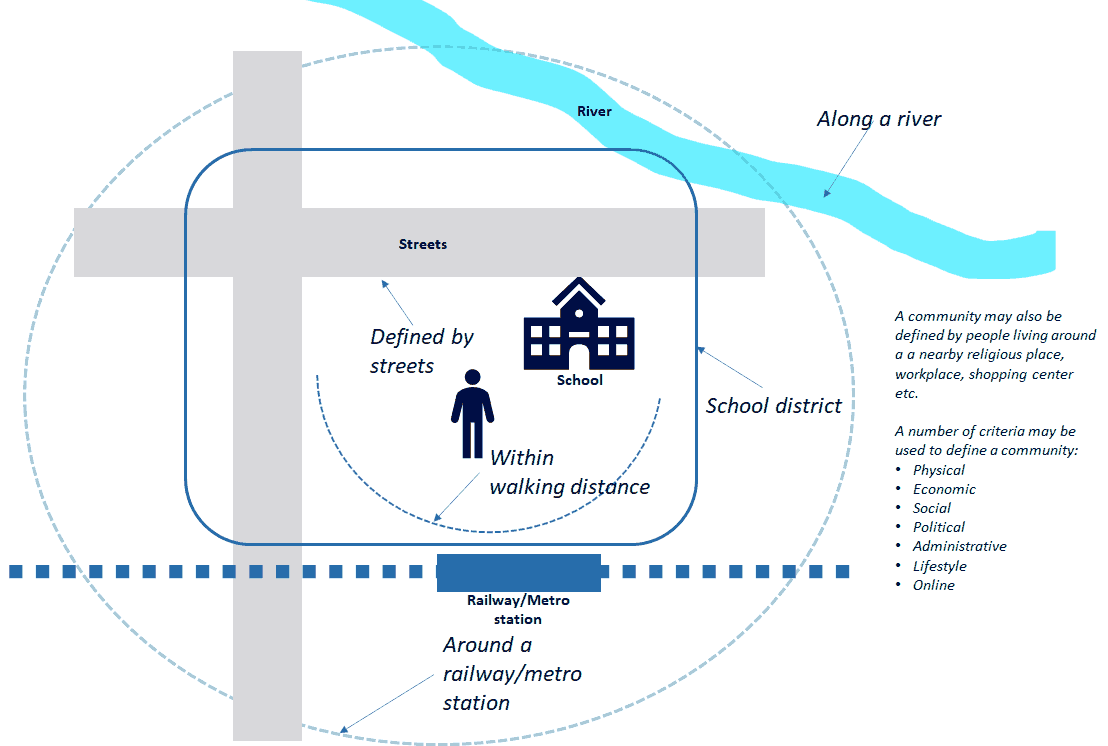Understanding and applying the concept of innovative communities, to achieve sustainable development
Sustainable Development: Innovative Communities
What indeed is a 'community'?
What indeed is a 'community'?
It is important to understand the meaning and definition of a community. Communities are essentially groups of people who come together for different reasons. Some of the criteria that are used to define a community include:
- Geographic criteria - people living in an enclosed area (on a hill, adjacent to a river, a marsh, etc.), a settlement, a street, or even block of flats may be considered a 'community'.
- Economic criteria - people belonging to the same income group, or working in the same location, having similar skills, etc. can come together to form a community.
- Social criteria - These are some common criteria used to define a community, including people for example, coming from the same hometown, speaking the same language, having the same ethnicity or belonging to the same religion, gender-based or age-based grouping, etc. Social criteria can also include groups that have similar beliefs or visions.
- Political/Administrative criteria - Communities are also formed among people belonging to the same political party, residing in the same city district or ward, designated area etc.
- Other criteria - There are other possible criteria used to define a community. A community can be formed on-line, sometimes referred to as a 'virtual community', when a group of people come together through information technologies such as the Internet.

Different criteria that can be used to define a "community"
A 'community' is therefore a group of people who live or work together in a geographically local area and have formed a social attachment to this area. It is small in scale, but may network with other communities. It is inclusive of all residents, and its members have formed human networks inside and outside the community to work towards commonly agreed goals and visions.
 |
Return to Innovative Communities Contact: |
